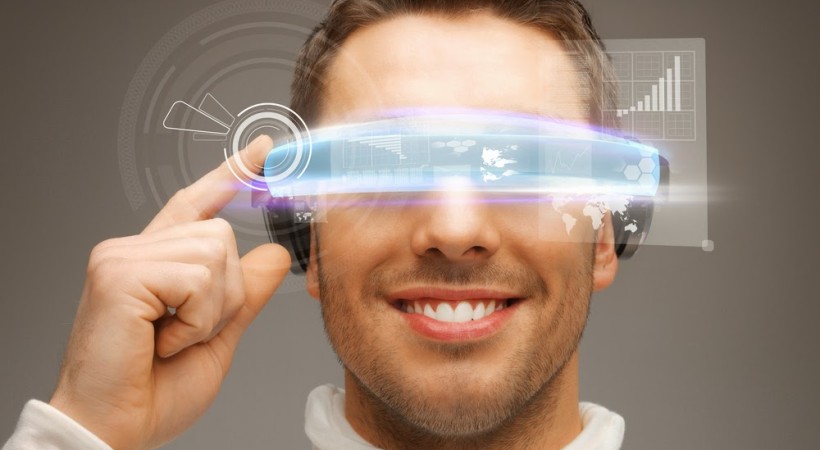This little robot looks good and dances too. The Nao Robot from Aldebaran.com Interview with Alannah Forster of the Coding Clubhouse Nicolas Rigaud of Aldebaran
aldebaran.com
developerweek.com/
Anna Chiara Bellini everything is awesome engineer
Toptal is a marketplace where start-ups, businesses, and organizations connect with top software developers. Read Toptal reviews at http://toptal.com/reviews .
Many companies — both large and small — have faced challenges with outsourcing software development such as candidate qualifications, team dynamics, and bottom-line financials. Our unique solution for hiring elite independent contractors addresses these concerns.
@toptalllc
Bella Baek with LEARNTECH LABS
LearnTech Labs is a coding school in downtown Oakland that teaches modern web and app development alongside computer science fundamentals. …
learntechlabs.com
@learntechlabs,
Lindsay Talbot Content Marketing Manager
#Virool, the easiest way for video marketers to reach millions of viewers globally. We promote the very best in #video #advertainment!
@talbot
Wonder Workshop robots Dash and Dot have just arrived at the #CodingClubhouse. Alannah Forster unpacks them describes what you get and gets them running. @CodeGirlClub. Dash and Dot are designed to Inspire kids to code.
Wonder Workshop, Dash and Dot robots unpacking
Wonder Workshop Dash and Dot robots unpacking – #codingclubhouse @codegirlclub #wonderworkshop
Alannah was invited to speak on stage with Lew Cernie, CEO of New Relic
Making a Difference with Software – FutureStack14
Published on Dec 17, 2014
FutureStack14 day 2 opening keynote featuring Lew Cirne, CEO and Founder of New Relic, Joel Worrall, CTO of CURE International, Chase Adam, VIsion at Watsi, Alannah Forster, President and Founder of Codingclubhouse.com and Yvonne Wassenaar, SVP of Operations at New Relic.
Scott Haluck CEO of Hackaway
HackAway is a non-profit that provides affordable mentorship and instruction in electronics and programming to increase the diversity in the tech industry.
Fashion of the Future
What will the future look like? Cyborgs? Androids? Hovercrafts? ID chip embedded in your wrist? What most people don’t think about is what will we be wearing in the future? Cloths that get warmer in a cold breeze, a dress that changes color to match a scarf, a bike helmet that calls for help if you get into an accident.
The future may be coming faster than we think because these gadgets already exist thanks to many people including Juan Hinestroza, and Becky Stern.
Juan Hinestroza is the associate professor of fiber science at Cornell University in Ithaca. He makes cotton “behave in ways witch it does not usually behave” creating cotton that can kill bacteria, conduct electricity, change color, sense gasses. He even has a pair of pants that charges your phone in when you put it in your pocket. His ultimate goal is to make cloths that keep themselves clean and not be able to stain.
Becky Stern is director of wearable electronics at Adafruit industries in New York. She makes tutorials so that people can make their own wearable electronics at home with parts and sensors made easily available mainly because of the Smartphone industry. She has created dozens of projects including a hat that lights up when you are talking, a tie that lights up when you are talking, a purse with conductive Velcro that lights up when it’s open, and a hat that reminds you to put on sunscreen or can act like a timer for any other reason. What will happen if a robot apocalypse happens? Adafruit will get rich with all the people buying their shirts that make it so that heat sensors can’t sense your body heat. My favorite is a RFID tag in nail polish so that the phone unlocks when you pick it up. The ultimate prank: a jacket that, when you chose, will turn off all of the TVs in a restaurant or where ever else you would like! It’s name? The TV be gone.
To listen to recording go to http://www.sciencefriday.com/playlist/#play/segment/9481
Kailey Shara, VP Electronics at CarbonOrigins, shows us Apollo, the Everything Board
The best projects have a great story behind them, and the Apollo from Carbon Origins is no exception. A few years ago, the people at Carbon Origins were in school, working on a high power rocketry project. Rocketry, of course, requires a ton of sensors in a very small and light package.
Apollo takes location awareness to the next level with an onboard microphone for audio recording and streaming. Apollo ships with a 128 x 64 pixel 0.96″ OLED screen. This allows users to navigate apps and display data easily. A device this small requires a natural feeling input. Our trackball provides a comfortable and precise way to control Apollo.
CarbonOrigins.com
kailey@CarbonOrigins.com
linkedin.com/in/kaileyshara

